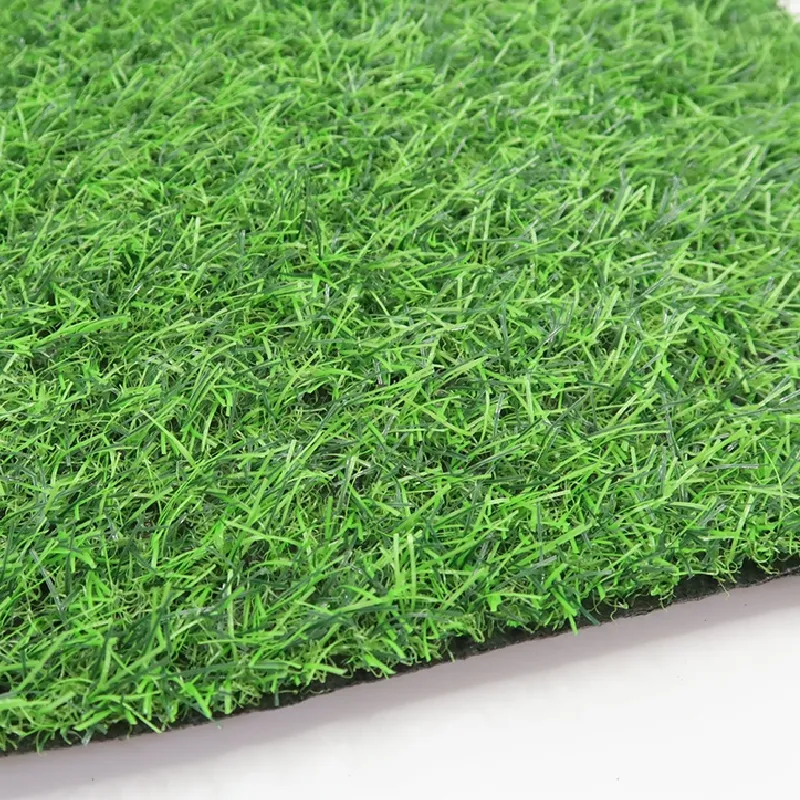
- Afrikaans
- Arabic
- Belarusian
- Bengali
- Czech
- Danish
- Dutch
- English
- Esperanto
- Estonian
- Finnish
- French
- German
- Greek
- Hindi
- Hungarian
- Icelandic
- Indonesian
- irish
- Italian
- Japanese
- kazakh
- Rwandese
- Korean
- Kyrgyz
- Lao
- Latin
- Latvian
- Malay
- Mongolian
- Myanmar
- Norwegian
- Persian
- Polish
- Portuguese
- Romanian
- Russian
- Serbian
- Spanish
- Swedish
- Tagalog
- Tajik
- Thai
- Turkish
- Turkmen
- Ukrainian
- Urdu
- Uighur
- Uzbek
- Vietnamese
synthetic grass field
Dec . 01, 2024 07:57 Back to list
The Emergence of Synthetic Grass Fields A Game-Changer in Sports and Recreation
In recent years, the adoption of synthetic grass fields—often referred to as artificial turf—has revolutionized the landscape of sports and recreation. Designed to mimic the look and feel of natural grass, these fields offer numerous advantages that have made them increasingly popular among schools, sports clubs, and municipalities. As we delve into the benefits, drawbacks, and future prospects of synthetic grass fields, it becomes evident that they are indeed a game-changer in the sporting world.
The Advantages of Synthetic Grass Fields
One of the primary benefits of synthetic grass is its remarkable durability. Unlike natural grass, which can become worn, muddy, and uneven due to heavy use or poor weather conditions, artificial turf is designed to withstand the rigors of constant play. This quality makes synthetic fields particularly appealing for multi-sport use, as they can accommodate everything from soccer and football to field hockey and lacrosse without showing significant signs of wear.
Additionally, synthetic grass requires far less maintenance than its natural counterpart. Traditional grass fields necessitate regular mowing, watering, aeration, and fertilization to remain in peak condition. In contrast, synthetic turf only needs occasional brushing and cleaning, drastically reducing the time and costs associated with field maintenance. This ease of upkeep allows schools and organizations to allocate their resources more efficiently and focus on other essential areas.
The environmental impact of synthetic grass is another topic of interest. While some critics argue that synthetic turf is made from petroleum-based materials and can contribute to microplastic pollution, advancements in technology have led to the creation of eco-friendly alternatives. Many manufacturers now offer products made from recycled materials and that are fully recyclable at the end of their life cycle. Furthermore, as synthetic grass does not require water, it can significantly reduce water consumption in arid regions where water scarcity is a pressing issue.
synthetic grass field

Additional Considerations
Despite its many advantages, synthetic grass is not without its drawbacks. One of the most commonly cited concerns is the surface temperature of artificial turf, which can become uncomfortably hot in sunny weather. Several studies have shown that synthetic fields can reach temperatures significantly higher than natural grass, posing a risk of heat-related injuries for athletes. However, advancements in technology have led to the development of heat-dispersing infill materials and specialized cooling systems that help mitigate this issue.
Another potential downside is the perception of safety. Although synthetic grass is designed to be durable and resilient, some studies have raised questions about potential health risks associated with certain infill materials, including the rubber granules often used. However, research has largely found that these materials are safe for play, and regulatory bodies continue to monitor and assess the situation closely. As a result, transparency and communication with communities about the safety of synthetic turf become crucial in addressing public concerns.
The Future of Synthetic Grass Fields
As the demand for synthetic grass continues to grow, the future seems bright for this innovative solution. The increasing popularity of multi-purpose fields in urban developments and schools highlights society's evolving engagement with sports and physical activity. Moreover, the ongoing advancements in technology promise to improve the quality and safety of synthetic grass, making it an even more attractive option for various applications.
In conclusion, synthetic grass fields represent a significant evolution in the realm of sports and recreation. Their advantages in durability, low maintenance, and environmental sustainability make them an appealing choice for various stakeholders. While concerns regarding safety and surface temperature remain, ongoing research and innovation are paving the way for safer and more efficient synthetic solutions. As we move forward, it is clear that synthetic grass fields will continue to play a vital role in shaping the future of sports, making athletic activities more accessible and enjoyable for people of all ages.
-
The Benefits of Artificial Turf for Indoors
NewsJul.15,2025
-
How Artificial Grass Suppliers Ensure Quality Products
NewsJul.15,2025
-
Artificial Grass and Pets: A Space for Relaxation
NewsJul.08,2025
-
Balcony & Outdoor Decoration with Artificial Grass
NewsJul.08,2025
-
Best Indoor Artificial Grass for Home
NewsJul.07,2025
-
Best Pet Turf for Dogs: Safe & Durable Artificial Grass Options
NewsJul.07,2025
Products categories









